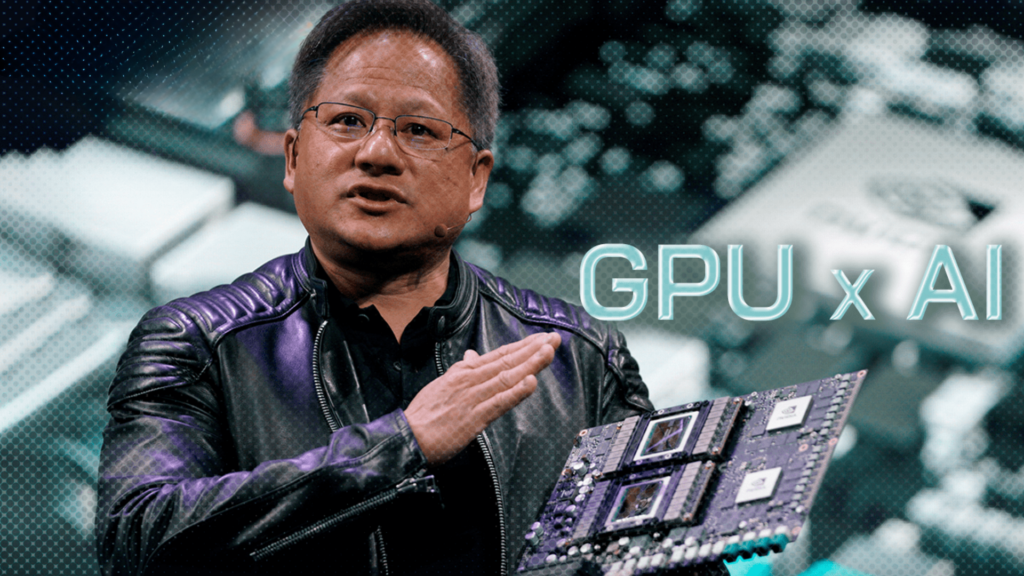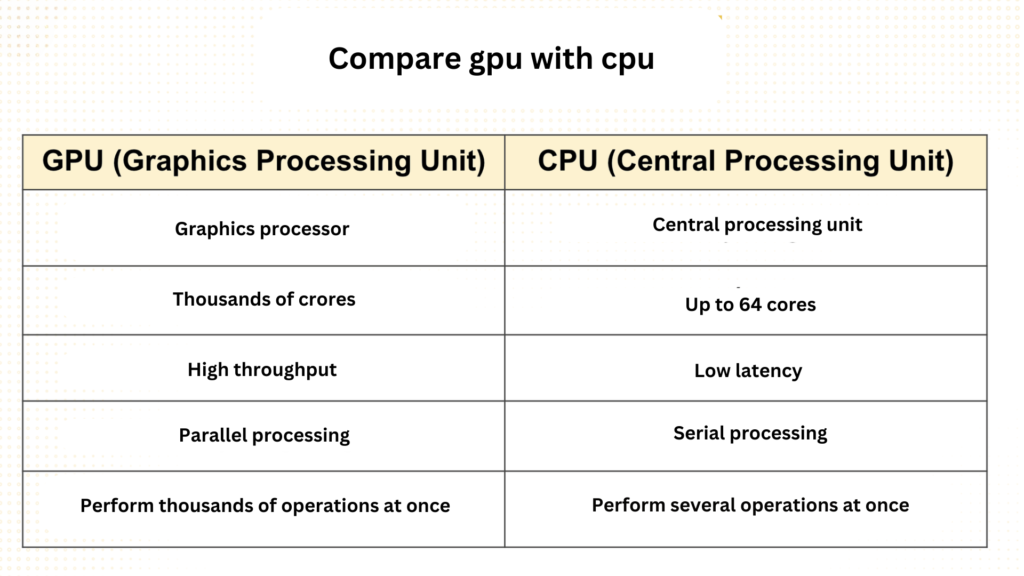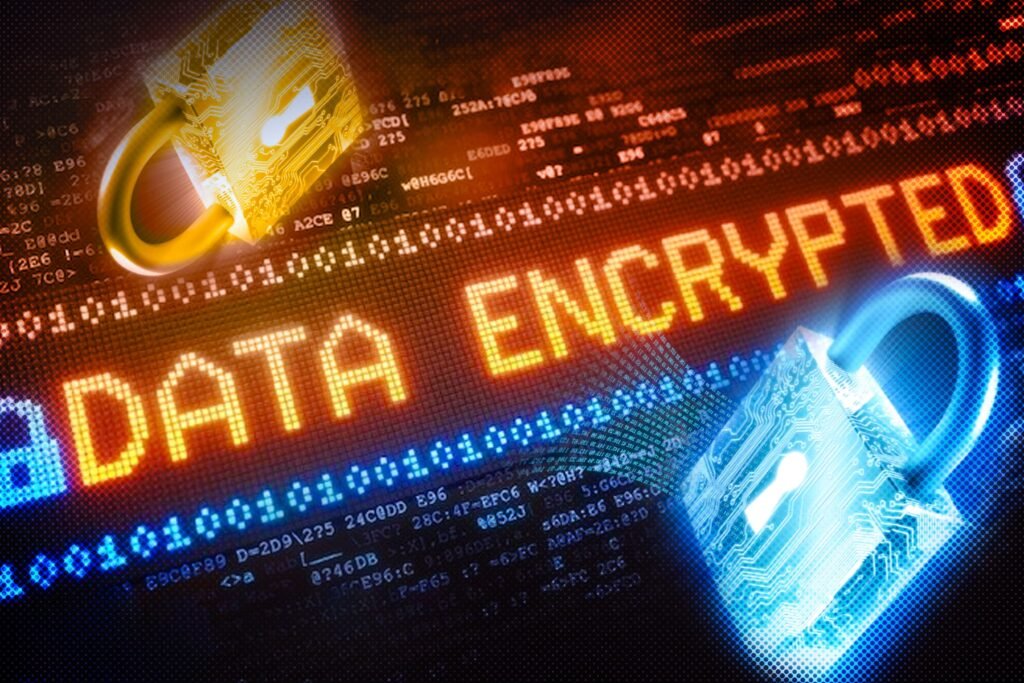GPUs are considered rare metals, or even gold, when serving as the foundation of artificial intelligence. So what is GPU? How are GPUs, AI and blockchain related?

What is GPU?
A Graphics Processing Unit (GPU) is a specialized electronic circuit with thousands of cores designed for parallel processing, breaking complex tasks into thousands or millions of separate tasks to solve them simultaneously.
While GPUs are well-known for their role in rendering graphics for video games and other visual applications, their capabilities extend far beyond that.
GPUs in Artificial Intelligence
GPUs are also widely used in Natural Language Processing (NLP) and image recognition. Their parallel processing capabilities are particularly useful for tasks like deep learning, where AI models need to process and learn from millions of data points.
AI tasks require a massive amount of matrix calculations. GPUs excel at handling large datasets and performing these calculations at high speed, reducing model training time from weeks to hours, or even minutes, depending on the model’s scale and the data volume.
GPUs in Robotics and Autonomous Vehicles
GPUs play a crucial role in developing and operating robots and autonomous vehicles. They provide the computational power needed for tasks like object recognition, localization, and motion planning, enabling robots and self-driving cars to operate more efficiently and safely.
The GPU Arms Race
In early 2024, Nvidia introduced its Blackwell GPU, the world’s most powerful chip for AI. This has attracted the attention of the European Union and the governments of the US, France, China, and the UK.
Nvidia is not alone; many major tech companies are also joining the race to develop GPUs, including Google, Amazon, Microsoft, Intel, Apple, OpenAI, and Tesla. This is because as AI continues to advance, the demand for GPUs will only increase.

To build better Deep Learning models and power AI applications, GPUs need increased computing power and memory bandwidth. This is why GPU manufacturers have continuously improved the performance, architecture, and computational capabilities of GPUs to tackle more complex tasks.
However, even Intel, with its world-class engineers and robust research foundation, required three years of work and billions of dollars to develop its own AI chip. Therefore, for most companies, purchasing GPUs or renting capacity from cloud GPU providers is a more efficient and cost-effective way to access GPU resources.
Read more: The Potential of Deep Learning when combined with blockchain.
Compare GPU with CPU
[The CPU (Central Processing Unit) is the central processor of a computer, responsible for executing instructions from the operating system and applications. CPUs typically have 2 to 8 cores, some have up to 64 cores, each core is very powerful and can handle multitasking efficiently. The CPU is often responsible for performing general tasks and processing them sequentially.
Meanwhile, the GPU has a multi-core architecture with thousands of small processing cores, organized into groups called blocks and threads. Each block can contain hundreds to thousands of threads, and these threads can perform tasks in parallel, allowing millions of calculations to be processed simultaneously.
This structure allows the GPU to perform parallel computing tasks with much higher performance than the CPU. For complex AI tasks, GPUs can provide processing speeds hundreds of times faster than CPUs. For a simple example, to draw a picture, the CPU needs to draw each dot one by one, while the GPU can complete the picture almost instantly. Thanks to its performance, the GPU also consumes less power than the CPU for the same task.
The role of the GPU in the crypto market
The crypto market and GPUs have an important and multifaceted relationship, especially in the context of crypto mining, decentralized computing, and the development of AI-based crypto applications.
Crypto mining
GPUs can be used to mine crypto assets on blockchains that use a Proof-of-Work (PoW) consensus mechanism such as Bitcoin, Litecoin, Monero, EthereumPoW… By using GPUs to perform complex calculations and solve mathematical algorithms, miners can validate transactions on the blockchain network and receive crypto rewards.
In the early days, crypto miners used conventional CPUs, but as mining difficulty increased, they switched to using GPUs in large numbers. This change significantly impacted the demand for GPUs, making them difficult for ordinary users and small businesses to access. Scarcity and high demand also significantly increase GPU prices compared to their original market value.
Sharing computing power
Crypto projects like Render Network (RNDR), Golem (GLM)… provide an environment for people with powerful GPUs, with excess computing power to share, to rent this power to those who own weak computers, who need to use this computing power to develop video products, NFTs, metaverses, etc.
Learn more: Render Network is changing the way the metaverse evolves.
Developing crypto projects applying AI technology
GPUs are widely used in the field of AI. With the explosion of crypto projects applying AI, GPUs play an important role in the development of the entire crypto market, especially crypto projects applying AI technology. For example:
Cortex (CTXC): An AI-powered blockchain platform that uses AI models in smart contracts and dApps. This platform uses GPUs to execute on-chain AI algorithms.
SingularityNET (AGIX): A crypto project that creates a decentralized marketplace for AI products and services developed on the blockchain platform. SingularityNET uses GPUs to support AI model training and deployment, aiming to develop Artificial General Intelligence (AGI).
Filecoin (FIL): Provides a decentralized data storage sharing environment, allowing users to rent and lease storage space. These datasets often require significant GPU power to process and analyze.
io.net (IO): A DePIN project on Solana, developing a decentralized AI cloud computing platform that allows AI and Machine Learning startups to rent and use computing power from GPUs at low cost. Enhanced security
Enhanced security
Zero-Knowledge Proofs (ZKP) technology is a breakthrough concept in the field of cryptography and secure computing. Creating ZKPs often requires significant processing power. GPUs can be used to process these ZKPs efficiently thanks to their powerful computing capabilities from parallel processing, thereby enhancing privacy and security in crypto transactions.
Some projects working in the ZKP space are Polygon, Mina Protocol, LayerZero, zkSync, Starknet…
Read more: Top 10 outstanding GPU projects in crypto.
Conclusion
GPUs play a crucial role in driving advancements in both artificial intelligence and blockchain technology. Thanks to their parallel processing capabilities, GPUs are opening up new opportunities, accelerating digital transformation, and expanding the capabilities of both blockchain and AI, bringing us closer to a future of more advanced and intelligent technology.


